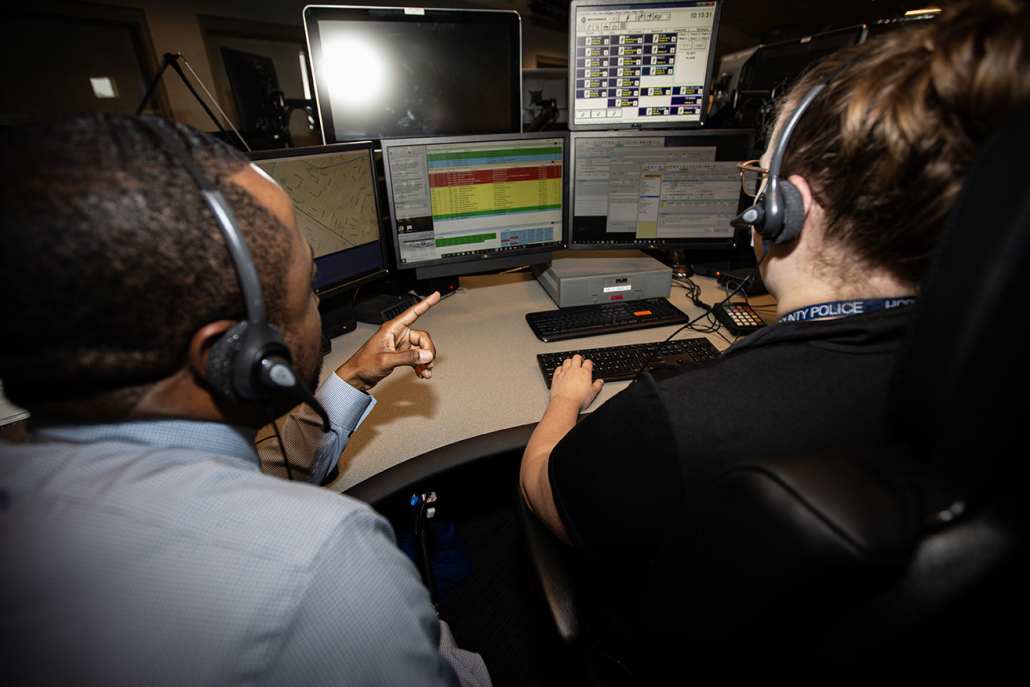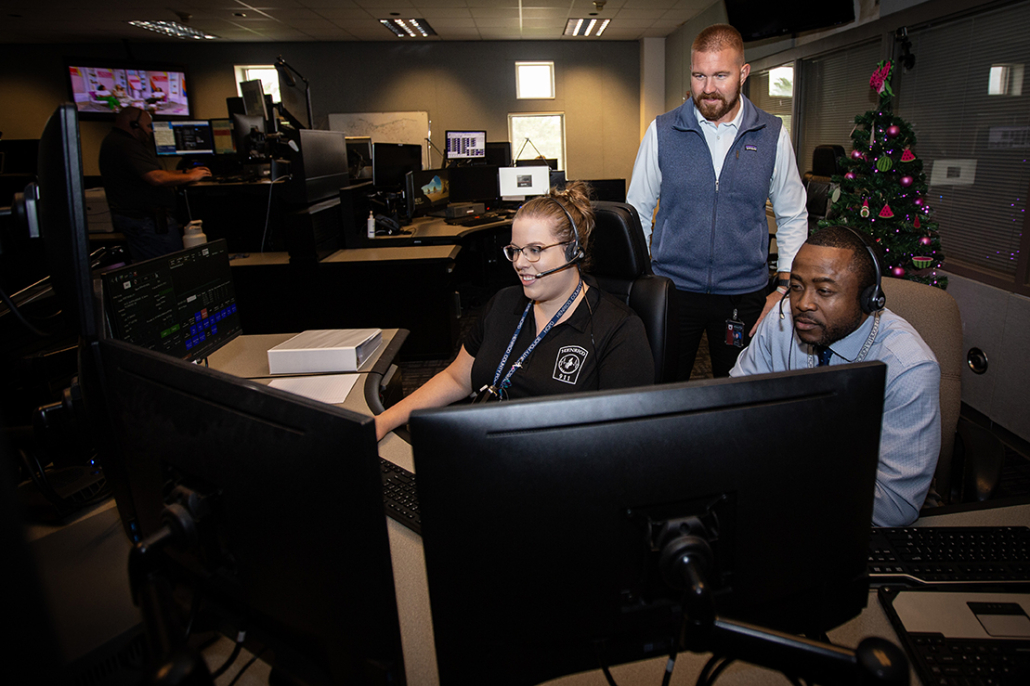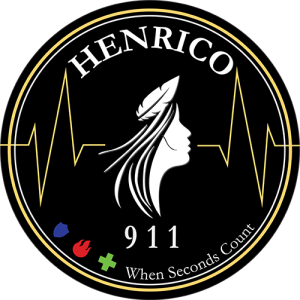Basic Communications Academy.
Training
No experience is required, and we will provide you with all the training and resources needed to become a successful 911 Dispatcher. Training for a 911 Dispatcher is no easy task, so it is imperative that you are focused, committed to learning, and can follow directions given to you by academy staff and trainers and study daily. We want you to be fully prepared to handle real-life emergencies that we receive daily in our Emergency Communications Center. All 911 Dispatchers must successfully complete two extensive primary training phases: A paid 10-week Basic Communications Academy and on-the-job training in which you will be cross-trained in four positions which include: Call-Taking, Police Radio Dispatching, Fire Radio Dispatching, and Teletype.
Phase 1: Basic Communications Academy
First, you will complete an intensive, 10-week Basic Communications Academy. The academy takes place in a classroom setting where you will learn, practice, and be tested on 911 computer functions, call types, questioning techniques, and much, much more. Probationary 911 Dispatchers are not permitted to work any other employment until after successful completion of the 10-week Basic Communications Academy. Those who elect to take college courses on their own time and at their own expense should remain mindful that they will be expected to modify their schedules to accommodate the training and operational needs of their position. Education leave and tuition reimbursement will not be approved during the 12-month probationary period.
Phase 2: On-the-Job Training
Upon graduation from the Basic Communications Academy, you must complete on-the-job training in our Emergency Communications Center. We cross-train in four positions to include Call-Taking, Police Radio Dispatching, Fire Radio Dispatching, and Teletype. You will be paired with a Communications Training Officer who will work alongside you for each phase of training. Your trainer will help guide you and evaluate your performance until you have been fully released on each position.
Call-taking:
This phase of training is approximately 8 weeks. You will learn how to process all incoming emergency and non-emergency calls for service. The calls we receive in the Emergency Communications Center range from low priority service calls and animal calls to high priority calls such as robberies, shootings, and domestics. We train you to handle any call that waits for you on the other end of the line. We process calls for police, fire, and EMS, and will train you on giving post-dispatch instructions such as CPR and other rescue techniques while emergency services are enroute.
Police Radio Dispatching:
This phase of training is approximately 8 weeks. You will be trained to dispatch police officers to calls for service, handle police officer’s requests, and learn radio dispatching techniques and procedures. Our radios are monitored 24 hours a day, 7 days a week, 365 days a year.
Fire Radio Dispatching:
This phase of training is approximately 4 weeks. You will be trained to dispatch fire and EMS units to calls for service and learn dispatching techniques and procedures. These radios are also monitored 24 hours a day, 7 days week, 365 days a year.
Teletype:
This phase of training is approximately 4 weeks. Teletype involves a wide range of duties such as entering missing persons, stolen vehicles, modifying protective orders, and communicating with other agencies through a secure terminal.
SAMPLING OF COMMUNICATIONS TRAINING BLOCKS
Customer Service
Customer service is one of the most important skills you’ll need as a 911 Dispatcher. We’ll teach you how to communicate and maintain contact with a variety of callers, such as children, panicking callers, and even callers who are uncooperative and intoxicated. We want to make sure you’re confident in your skills, so no matter the situation or who is on the other end of the line, you’re able to calmly get the information needed to send help and ensure the safety of responding emergency personnel.
Customer service qualities we look for in applicants include accuracy, being courteous, efficient, ethical, knowledgeable, prompt, and responsive. The duty of a 911 Dispatcher is never to judge the caller, but to be the calm in the chaos.
You’ll also learn the different types of communication, how even the tone of your voice to the volume can make a difference. When you answer calls, you’re working to help anyone that is in Henrico County at any given time that calls into the center. You’re working with Police, Fire and EMS personnel along with other jurisdictions. This position is vital to the department and customer service skills is one of the biggest assets to have as a 911 Dispatcher.
CAD (Computer Aided Dispatch System)
One of the most important blocks of instruction taught in our academy is learning to efficiently navigate our Computer Aided Dispatch System. This course will teach you in depth the technical side of 911. You will learn how to enter, update, and clear calls into the system, navigate the mapping system, researching tools and databases, unit statuses, assigning field commands, and much more.
Active Shooter
In this training block students will learn
- How to identify an active shooting incident
- Questioning techniques for various types of callers involved with this type of incident
- Effective techniques for communications with the shooter
- Techniques for how to handle possible hostage situations
Being this is a very heightened situation for the victim, the 911 Dispatcher must be able to stay calm and decisive. This section we’ll go over the mentality, characteristics, and predictors of active shooters and problem behavior. You will learn response plans and how to help victims stay safe. You’ll learn crisis intervention so that you can defuse intense emotions, buy time, establish a connection with the caller, communicate empathy and gain information. This career requires active listening skills like reflecting/mirroring, open ended questions and being able to not just “hear” a caller but listen and understand them.
Cultural Diversity
This training block is designed to ensure and increase sensitivity and awareness of cultural diversity and improve communication skills. Understand that everyone has had different past experiences and we can learn from one another. We’ll also go over the differences in generations and the characteristics and keys to working well together.
Intro to Communications, Fire and Police
These are three different sections you’ll learn about while in the Basic Communications Academy. When you apply to be a 911 Dispatcher, you’ll answer calls for Police, Fire, and Emergency Medical Services for both 911 emergency calls and non-emergency calls. We’ll go over thoroughly with you the different types of codes there are to determine urgency of response for calls for service. Additionally, we will teach you how to properly answer the phones and the key questions you need to ask on each call.
Mental Health
This section not only do we teach you about what to do in a crisis situation with a caller, but we also teach you about all the mental health services that are available to you. Being a 911 Dispatcher can be difficult at times with the type of calls you’ll receive. That’s why we offer different types of consultations, support following any incidents, and brief counseling. We have crisis lines and emergency services that provide mental health coverage 24/7/365 days a year.
As the first, first responder, you have a great impact on the public’s perception of law enforcement and how the victim deals with the trauma. We’ll teach you how to understand the crisis process, to try and make the experience of calling 911 a positive outcome.
This is a lot of information to take in and we understand if you feel overwhelmed by all there is to learn, but don’t be intimidated. We’ll teach you everything you need to know before you hit the floor. Being a 911 Dispatcher is no easy task, but you will make a difference. When you go home at the end of the day, you’ll leave knowing you helped someone.



